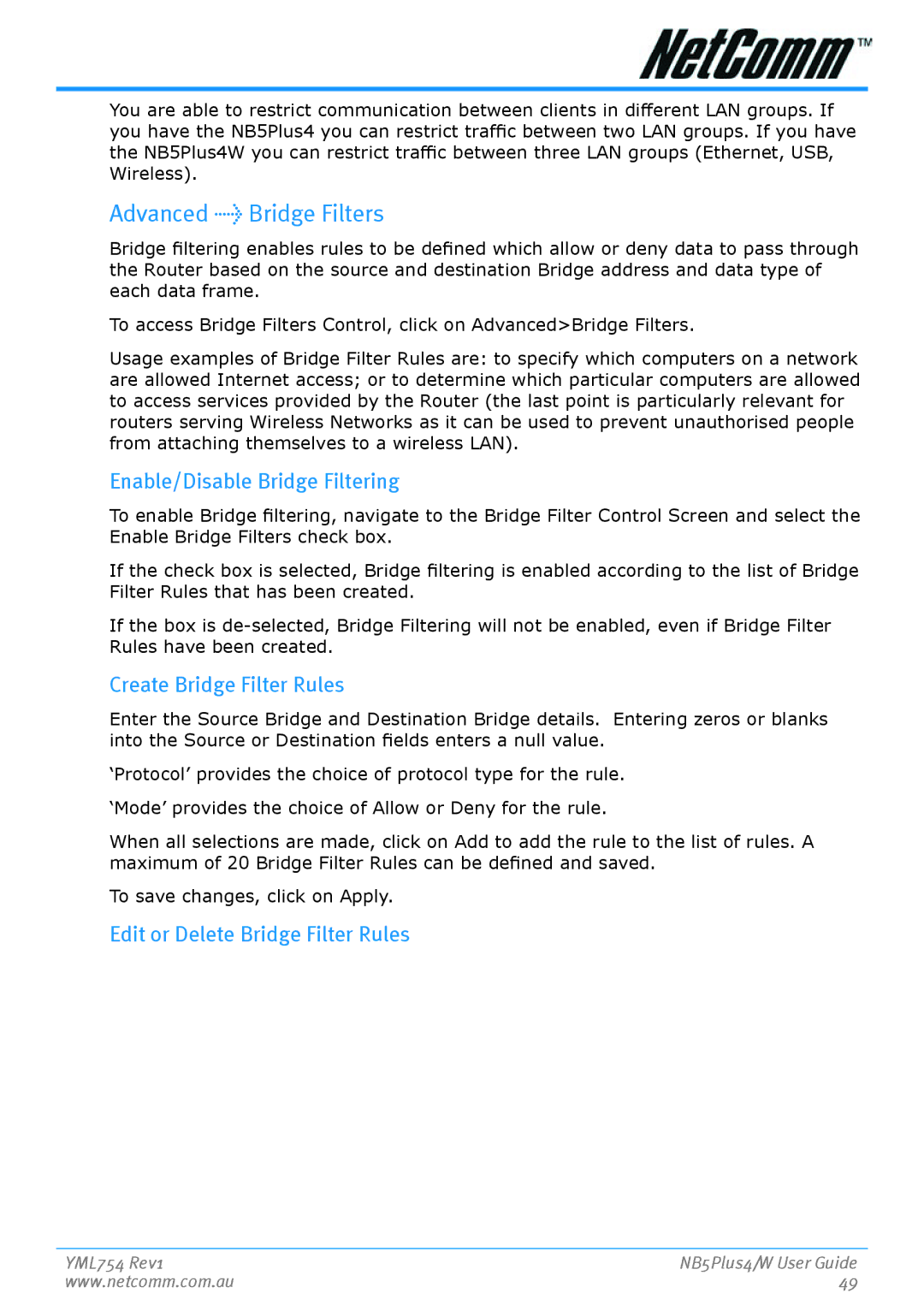
You are able to restrict communication between clients in different LAN groups. If you have the NB5Plus4 you can restrict traffic between two LAN groups. If you have the NB5Plus4W you can restrict traffic between three LAN groups (Ethernet, USB, Wireless).
Advanced > Bridge Filters
Bridge filtering enables rules to be defined which allow or deny data to pass through the Router based on the source and destination Bridge address and data type of each data frame.
To access Bridge Filters Control, click on Advanced>Bridge Filters.
Usage examples of Bridge Filter Rules are: to specify which computers on a network are allowed Internet access; or to determine which particular computers are allowed to access services provided by the Router (the last point is particularly relevant for routers serving Wireless Networks as it can be used to prevent unauthorised people from attaching themselves to a wireless LAN).
Enable/Disable Bridge Filtering
To enable Bridge filtering, navigate to the Bridge Filter Control Screen and select the Enable Bridge Filters check box.
If the check box is selected, Bridge filtering is enabled according to the list of Bridge Filter Rules that has been created.
If the box is
Create Bridge Filter Rules
Enter the Source Bridge and Destination Bridge details. Entering zeros or blanks into the Source or Destination fields enters a null value.
‘Protocol’ provides the choice of protocol type for the rule. ‘Mode’ provides the choice of Allow or Deny for the rule.
When all selections are made, click on Add to add the rule to the list of rules. A maximum of 20 Bridge Filter Rules can be defined and saved.
To save changes, click on Apply.
Edit or Delete Bridge Filter Rules
YML754 Rev1 | NB5Plus4/W User Guide |
www.netcomm.com.au | 49 |
